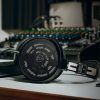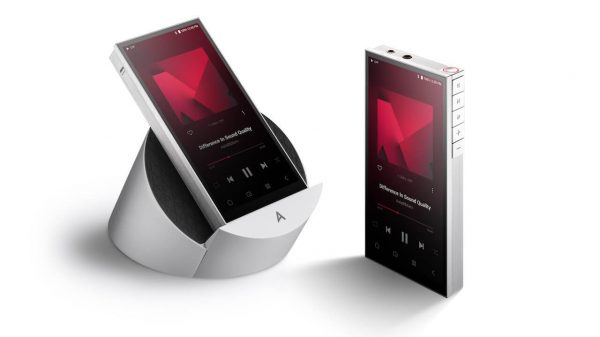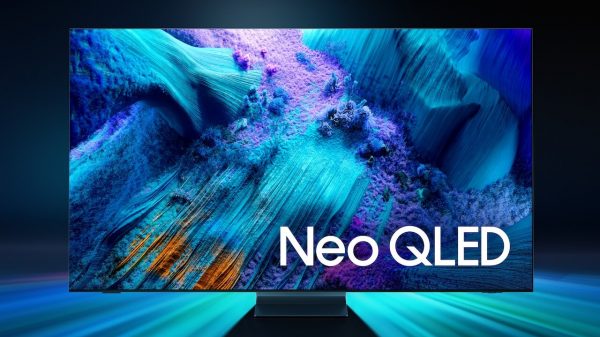Samsung makes and sells more TVs than any other brand, but they also make a line of soundbars that sell very well. The Samsung HW-Q800A is an interesting soundbar in a very crowded category that lacks differentiation.
Let’s take a look at what it offers and how it performs to see if it might improve your TV viewing experience.
The Samsung HW-Q800A is a 3.1.2 channel system that combines a soundbar with a compact wireless subwoofer. The Q800A can also be expanded into a 5.1.4 channel configuration with the purchase of the optional SWA-9500S wireless surround speakers.
What You Get
Here is what the Samsung HW-Q800A comes with to get you started:
- Soundbar
- Wireless Subwoofer
- Remote Control with Batteries
- Soundbar and Subwoofer Power Cords
- AC/DC Adapter for Soundbar
- HDMI Cable
- Wall Mount Guide and Hardware (2 Holder Screws, 2 M4 x L10 Screws, 2 Bracket-Wall Mounts, 4 Rubber Feet.
- The only thing missing that would have been nice to include is a digital optical cable.
Connection Options
The connections provided by the Samsung HW-Q800A Soundbar include:
- 1 HDMI input (Dolby Atmos/DTS:X, 4K/60Hz video, and HDR10/10+, HLG pass-through).
- 1 HDMI output with ARC/eARC compatibility.
- 1 Digital optical audio input. (2-channel PCM, Dolby Digital and DTS 5.1 compatible)
- 1 USB Service Port – This can be used for installing firmware updates from a USB flash drive, but can’t be used to play media files stored on USB flash drives.
NOTE: No analog audio input is provided.
Set-Up
The initial setup of the Q800A is quick and easy. After unboxing just do the following:
- Place the soundbar and subwoofer where you want them (if you are wall-mounting the soundbar, the hardware is provided) but prepare to move the subwoofer. I’ll explain later on in the review.
- Connect the provided HDMI cable from the soundbar to the HDMI-ARC/eARC port on your TV.
- (Optional) Connect a digital optical cable from the TV to the soundbar.
- (Optional) Connect a source device to the soundbars HDMI input, if you run out of HDMI connections on your TV.
- Plug the soundbar into power using the AC/DC adapter.
- Plug the subwoofer into power using the provided cord.
- Turn the soundbar and subwoofer on and they should pair.
- Put batteries in the remote and start using your system.
Complete instructions come in the box, or you can download them directly from the Samsung website (pdf file).
HDMI-ARC/eARC
HDMI-ARC and eARC are very convenient connection options that allow you to connect all your source devices to a TV and then audio can be transferred from the TV to the soundbar using the same HDMI connection that transfers video passing through from the soundbar to the TV from the Soundbar’s other HDMI connection.
This means you don’t have to make a separate digital optical connection from the TV to the soundbar to hear TV audio. This is especially convenient if you have a Smart TV.
ARC is limited to stereo, Dolby Digital, and DTS 5.1 audio. This means that if your TV has ARC, but not eARC, you won’t be able to access advanced surround sound formats such as Dolby TrueHD, Atmos, DTS-HD Master Audio, or DTS:X from the TV or devices connected to the TV.
However, if you have a recent model TV that includes eARC, then you will be able to access the above-mentioned advanced surround sound formats originating from the TV or devices connected to the TV.
For TVs that only have the ARC option, the Q800A does provide one HDMI input for connecting an external device which allows up to 4K video pass-through and access to the more advanced surround formats.
Having just one HDMI input may not be enough. If you have a media streamer and a Blu-ray/UHD Blu-ray disc player, you can’t connect both of them to the Q800A at the same time, you have to either plug/unplug these devices from the soundbar or get a compatible HDMI switcher. However, this necessitates an additional box and cable clutter for your system.
The Subwoofer
The subwoofer is substantial both in size and sound. You won’t lack deep tight bass for movie viewing, but it can be overwhelming upon first listen at its default level setting. The subwoofer’s low-frequency drop-off point is approximately 35Hz which is respectable for a soundbar/subwoofer system.
I would not necessarily place the subwoofer directly in any corner and think you’re done. Moving it 6-inches or more from the corner will decrease its output but also tighten up its impact and avoid overloading the room.
The Q800A provides separate soundbar and subwoofer level controls so you can balance the two to your listening preference.
Since the sub is wireless, you don’t need a cable to connect it to the soundbar, but it does require AC power (cord provided).
When you plug the sub into power, it comes on and starts looking for the soundbar. When I turned the soundbar on, it paired automatically, but if it doesn’t there is an ID set button provided on the rear of the soundbar. The ID set can also be used to pair the optional wireless surround speakers (requires additional purchase).
Surround Sound
In addition to its left, center, and right, and subwoofer channels (3.1), the Q800A implements two additional channels within the soundbar which is where it gets its 3.1.2 channel label.
The .2 in its 3.1.2 channel designation refers to its 2 vertically firing speakers that are embedded into the soundbar to support Dolby Atmos height channel effects. This is intended to provide listeners with a more immersive surround sound experience.
To further support Dolby Atmos and DTS:X, Samsung includes its Acoustic Beam feature. When Dolby Atmos or DTS:X audio is detected in the source content, the two height speakers are activated. The sound from the height speakers is then directed through a grill with 23 tiny holes that direct the sound up and out so it can bounce off the ceiling to create a more immersive overhead sound.

Playing a variety of movies and music, I thought the Q800A did a great job in my 15×20 foot room – but I also felt that the Dolby Atmos/DTS:X height effects for movies were lackluster.
Although the soundbar and subwoofer easily filled the room with horizontally directed sound, the soundbar, despite Samsung’s touting of its Acoustic Beam feature, doesn’t provide enough power for the directed sound to reach and bounce off the ceiling for true overhead sound (I have low flat ceilings). That being said, I thought the combination of Dolby Atmos with Acoustic Beam did provide an up-and-out front-stage soundfield that “filled” the space between the TV and seating position rather well.
Sound Modes
The Samsung Q800A provides several audio settings that allow you to tailor the sound further. There are three core sound modes: Standard, Surround, Game Pro, as well as Adaptive Sound.
The Q800A also features Samsung’s Active Voice Amplifier which does a good job of bringing out music vocals and dialog which can be a problem on both streaming and physical media (DVD, Blu-ray, UHD Blu-ray) content.
Airplay 2 and Bluetooth
The HW-Q800A is Apple AirPlay 2 compatible. You can cast audio to the Q800A from an iPhone, iPad, or Mac, from any installed music app, such as Amazon Music, Spotify, Tidal, YouTube Music, or Apple Music. You can combine the soundbar with AirPlay 2-enabled speakers in a multi-room audio setup.
The HW-Q800A doesn’t support Chromecast. However, you can connect a Chromecast plug-in media streamer to the available HDMI input if you want, but it would probably make more sense to plug it into your TV directly. You can also stream music from compatible installed apps on Android phones to the Q800A using Bluetooth.
TIP: If you have a compatible Samsung Galaxy Android Phone, you can tap the phone on the soundbar and mirror music playback from the phone to the soundbar.
The HW-Q800A is compatible with the following streaming audio music formats: WAV, MP3, WMA, OGG, FLAC, AAC, ALAC, and AIFF.
Control Options
There are four ways you can control the Q800A soundbar. You can use the provided remote control, the Samsung SmartThings App, Alexa, or the onboard controls.
Provided Remote Control: Using the remote control may seem like the easiest choice, but one problem is that the LED status display on the Q800A is very small. This means that at a distance, the LED display is hard to read, especially since words longer than HDMI or TV/ARC are scrolled horizontally because they don’t fit.

Samsung SmartThings App: One solution is to use Samsung’s SmartThings app on an iOS or Android phone. This allows you to see the setting options on your phone’s screen. The SmartThings app is required to connect the Q800A to your network Wi-Fi in order to use Alexa and other control features.
The Samsung SmartThings app allows you to control some soundbar settings. This includes sound modes (Standard, Surround, Game, and Adaptive Sound), bass/treble, EQ (Equalizer), subwoofer level, voice enhancer, bass booster, and night modes on/off.

Alexa: Another control option that is extremely convenient, but doesn’t provide access to all functions is to use Alexa and just give verbal commands.
Outside its role in providing better sound for TV and movie viewing, as well as playing music, the Q800A has Alexa built-in (the needed microphone is built into the soundbar). The Samsung SmartThings App allows you to set up both a mobile remote control and enable the Alexa feature.
Once enabled, the Samsung HW-Q800A becomes a functional Alexa device, allowing it to be used like you would use an Amazon Echo. You can give it remote control commands, have it play music from compatible streaming services that are linked to your Amazon account, and ask the time, the weather, turn the TV on/off. For example, while watching a movie or listing to music, you can ask the time or weather, and once Alexa is finished answering it returns the soundbar to the music or movie.

Onboard Controls: The least desirable control option is to use the Q800A’s physical controls, but the only options there is soundbar on/off, input selection, volume, and Alexa microphone on/off.

Final Thoughts
The 38.6-inch width of the HW-Q800A soundbar pairs well with 48 to 65-inch TVs. You can use it with a larger TV, but a wider soundbar might not only look better but provide a more effective soundstage. The Soundbar’s low profile allows it to fit under most TVs without blocking the bottom of the screen. If you have a wall-mounted TV, you can also wall-mount the soundbar (hardware is provided).
The Samsung HW-Q800A can work with any TV you might have (as long as it has a digital optical output or HDMI-ARC/eARC) but select Samsung 2020/21 TV models are required to access its Q-Symphony and SpaceFit sound optimizing features are only available on select 2021 Samsung TV models.
Q-Symphony combines the sound of your TV speakers with the soundbar, which is intended to provide fuller front stage sound, while SpaceFit auto-calibrates the TV to get the best sound quality, in relation to your room.
NOTE: Q-Symphony and SpaceFit were not tested in this review.
The Samsung HW-Q800A provides an effective way to improve TV sound and delivers deep bass, a clear midrange, and clean highs. The HW-Q800A supports several surround sound formats including Dolby Atmos. Additional dialog enhancement, EQ, and processing (including presets) provide a lot of listening flexibility.
The HW-Q800A is good value for a soundbar/subwoofer system, but keep in mind the few features you can only access if you have a compatible Samsung TV and if you want to experience full 5.1.4 channel surround sound, you need to purchase an extra speaker package.
Pros
- Easy to set up.
- Good balance between dialog and other channels.
- Lots of audio settings.
- Option to add wireless surround speakers.
- Alexa built-in
- Integrates with Samsung SmartThings mobile app.
- The HDMI input is 4K/HDR video pass-through compatible.
Cons
- The subwoofer can be overpowering.
- Dolby Atmos implementation is not that impressive.
- Only one HDMI input for the external source devices.
- No analog audio input.
- Some features only work with select 2020/2021 Samsung TVs
The Samsung HW-Q800A can be found at several retailers including Amazon ($899 MSRP).
The optional SWA-9500S Wireless Surround Speakers can also be purchased from Amazon $299 MSRP).
Also, check out our review of the Samsung HW-Q900A soundbar/wireless subwoofer system. That system has all the capabilities of the HW-Q800A, including Dolby Atmos and Alexa, but is wider, at 48-inches. This makes it a great match for TVs 50-inches and larger and provides a wider stereo sound field.
Also, instead of 3.1.2 channels, the Q900A expands things to 7.1.2 channels (left, center, right, 2 height channels, left and right side channels, and, of course, the subwoofer channel). The Q900A can also be expanded into a 9.1.4 channel configuration (which includes two additional Dolby Atmos height channels) with the purchase of the optional SWA-9500S wireless surround speakers.





































PP
September 20, 2021 at 5:44 pm
I own both the Q800T and Q800A and I have to say that they are very different in sound quality although soundbar and sub design are identical. Q800A has a voice enhancement option which works remarkably well which is absent on the Q800T and it is very obvious.
Both soundbars and subs are set exactly the same: Bass 2 Treble 4 Center 3 Top 6 and Sub 2.
From most reviews I have seen, I agree that both A and T are better for movie then for music.
The Atmos feature is almost absent when functioning with Samsung Q950T and Q70T TVs, so those expecting full surround experience will be disappointed.
However, movie watching with these soundbars does pack the session with powerful sounds. Although I must also say QSymphony, supposedly coded for directional sound, is also very mild.
For music, playing tracks with Adaptive mode on 800A and 800T are worlds apart.
On the 800A, listening to vocal music from the sixties and seventies tend to accentuate the treble to an undesirable level and putting on standard mode solves it, however on the 800T, the same tracks sound better on Adaptive and Surround, and bad on standard.
Lastly, on the 800A, the AVA can only be switched on and off on Soundbar mode alone, when you are on QSymphony mode, the AVA option is unavailable.
I hesitated to purchase the Sonos Arc but the pricing in my part of the world places the Arc at an equivalent of 1150 USD whereas the Q800A at 455 USD. So it was a no brainer to purchase the Samsung, however, I believe those who listen a lot to music should really go to a store to compare. From what I have read, probably the Arc would be better for music listening. The Samsung 800 lacks bass for music but thunders for movie, I can’t figure why.